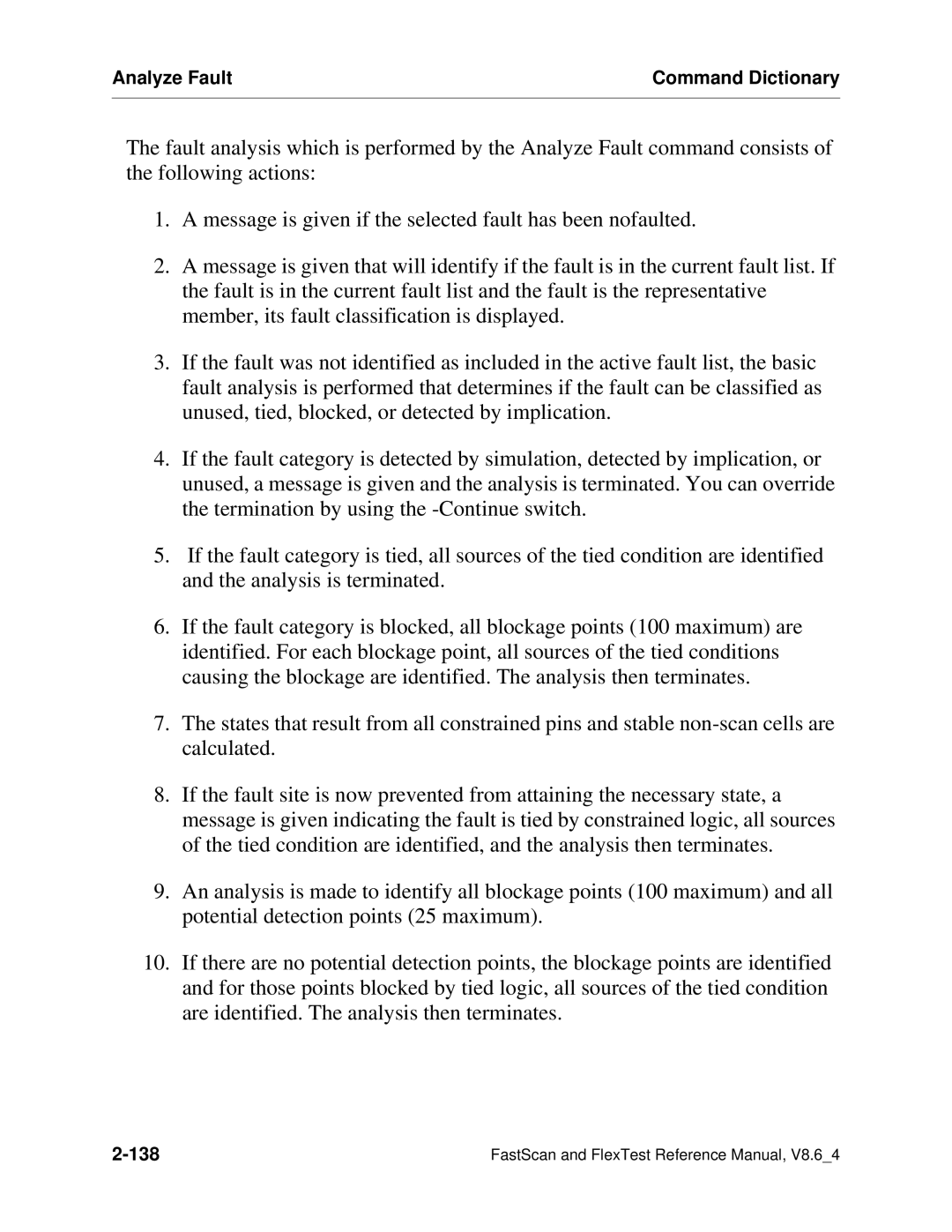Analyze Fault | Command Dictionary |
|
|
The fault analysis which is performed by the Analyze Fault command consists of the following actions:
1.A message is given if the selected fault has been nofaulted.
2.A message is given that will identify if the fault is in the current fault list. If the fault is in the current fault list and the fault is the representative member, its fault classification is displayed.
3.If the fault was not identified as included in the active fault list, the basic fault analysis is performed that determines if the fault can be classified as unused, tied, blocked, or detected by implication.
4.If the fault category is detected by simulation, detected by implication, or unused, a message is given and the analysis is terminated. You can override the termination by using the
5.If the fault category is tied, all sources of the tied condition are identified and the analysis is terminated.
6.If the fault category is blocked, all blockage points (100 maximum) are identified. For each blockage point, all sources of the tied conditions causing the blockage are identified. The analysis then terminates.
7.The states that result from all constrained pins and stable
8.If the fault site is now prevented from attaining the necessary state, a message is given indicating the fault is tied by constrained logic, all sources of the tied condition are identified, and the analysis then terminates.
9.An analysis is made to identify all blockage points (100 maximum) and all potential detection points (25 maximum).
10.If there are no potential detection points, the blockage points are identified and for those points blocked by tied logic, all sources of the tied condition are identified. The analysis then terminates.
FastScan and FlexTest Reference Manual, V8.6_4 |
